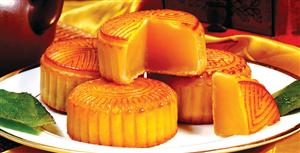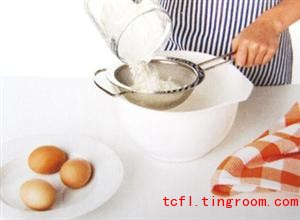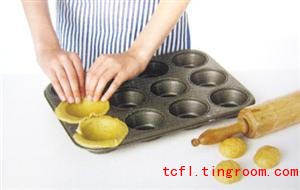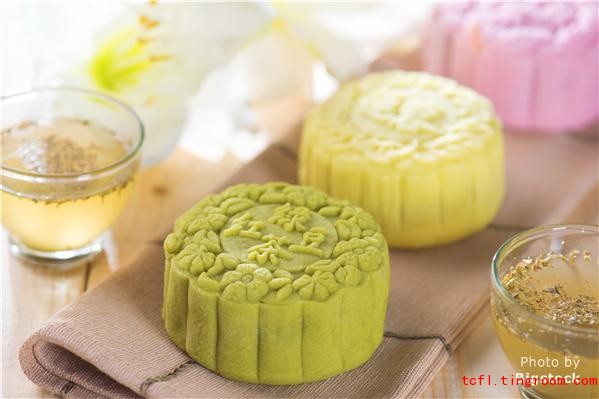The Mid-Autumn Festival falls on the fifteenth day of the eighth lunar month –sometime in September or October- and like the Spring Festival, is regarded as an occasion for family reunio.
This ancient holiday is so called because it occurs halfway through autumn. It is no longer only celebrated by the Han ethnic group, but is enjoyed throughout China.
On this day, families often gather for a feast, which includes noon cakes and seasonal fruits, while observing the moon which is supposed to be nearest to the earth and can be seen at its fullest and brightest. People who cannot be near their family at this time also look up to the moon, which reminds them of their home.
The mid-Autumn Festival celebration is not complete without eating moon cakes which have a round shape that imitates the moon’s fullness.

These were originally offered as a sacrifice to the moon, and were later eaten while families group together in parks and on beaches, carrying candle lanterns, and enjoying the beauty of the full harvest moon; they have therefore become a symbol of happiness for family reunio.
The custom of eating moon cakes came into existence during the Yuan Dynasty and is associated with Zhu Yuanzhang, the leader of the peasants’ uprising.
In order to shake off the shackle of the tyrannical rule of Yuan Dynasty, rebellions erupted all over central China.
Zhu Yuanzhang tried to co-ordinate the scattered rebel forces into a united uprising. However, he could not find a suitable means of communication to transmit his messages, because of the strict control of the imperial government.
Zhu’s military adviser hit on a good idea. A secret message was to be embedded inside the moon cakes, stating that “the insurgence was scheduled for the night of the fifteenth day of the eighth lunar month”.
When the moon cakes were delivered to the rebel forces, the message was received.
The rebel forces launched a joint action on the scheduled date, marched into the capital of the Yuan Dynasty, and won the final victory.
The story of this brilliant tactic began to circulate among the general population who then started the custom of making and giving away moon cakes as gifts.
During the Manchu regime, there was a large exodus of Chinese to various parts of south East Asia in different periods of the Ch’ing history. So much that the Manchus were perturbed and laws were issued to prohibit migration.
With them the emigrant Chinese carried abroad their culture and traditions, many of which have had their evolution on alien soil. One of these traditions was the moon cake which forms the chief item of food offering purely in celebration of the moon, without any connection with the harvesting festival in China.
Shaped like the surface of the moon, this delicious cake is seasonal and only baked for sale during the festive season.
To attract customers, present-day Cantonese restaurants, which make moon cakes and sell fanciful lanterns, exhibit revolving and novel miniature effigies and pictures, portraying legendary accounts of the Moon Festival, decorate and illuminate their buildings with artistic posters, neon light and color bulbs every night for 3 or 4 weeks prior to the festival day.
There are some varieties of cakes. There is the tou-sha (black-bean paste) variety; the lien-yung (brownish-lotus paste) variety; the tou-yung (yellow-bean paste) variety, and also the golden trotter (lotus-seeds mixed with sweetened paste). Very often the yolk of a preserved duck’s egg is stuffed in the moon cake to increase its flavor.
Besides the moon cake, there are the wheat-flour cakes moulded into different shapes to represent the fish, the crab, an old man, the lion and the dragon. There are, in addition, the Hokkien-made moon cakes of diverse sizes, filled with ingredients of preserved pumpkin and sweetmeat.
Moon cakes are created in handmade wooden molds that give them their traditional shape.
Due to geographical differences, the form, texture, and method of baking moon cakes varies throughout the country. They come in different local styles, such as Guangdong style, Suzhou style, Chaozhou style, Beijing style, Ningbo style, and Yunnan style.
Beijing-style moon cakes are perfectly suited for vegetarians, Guangdong-style moon cakes contain a little oil and a lot of sugar, Suzhou-style moon cakes are filled with a lot of both oil and sugar, while Chaozhou-style moon cakes contain crunchy sugar.
Today, the most common and best-loved moon cakes are those made in the Guangdong style, known for their high-quality ingredients and unique preparation process.
The convex patterns on the coverings are easily identifiable, and Guangdong-style moon cakes are tender, rich, and heavy, with thin crusts and thick fillings.
In areas south of the Yangtze River, it is popular to eat taro and green soy beans in addition to moon cakes at the Mid-Autumn Festival. These two vegetables mature around the middle of the eighth lunar month.
The small pastries are so rich that tradition dictates that they should be eaten sparingly because of their high-sugar and high-fat content cut into slivers and consumed with sips of tea.
This accompaniment has inspired several companies to include brands of famous Chinese tea into gifts packs for the festival.
Moon cake sales show a huge increase around the time of the Mid-Autumn Festival. Most of them are indented as gifts for friends and relatives. If someone gives you moon cakes it shows they respect you and appreciate their relationship with you.
In today’s China, moon cakes are treated as a symbol of luck and reunio. The exchange of moon cakes as gifts shows a desire to look forward to happiness and prosperity.
Let’s make MOONCAKES
Moon cakes and the moon itself are symbols of harmony. Some cakes carry a moon print on top; others have a moon-like egg yolk in the centre.
What you need:
Makes 12 cakes
350g self-raising flour
3 teaspoons baking powder
150g sugar
180ml vegetable oil
3 eggs, cracked into a bowl and lightly beaten
about 175ml cold water
Plus:
Oil or butter for greasing the baking tray
about 450g sweet red bean paste*
1 egg, cracked into a bowl and beaten for brushing
* What’s this: red bean paste?
To make this paste, red azuki beans are boiled, then pureed and sweetened. It is used as a filling in rice balls, pancakes and in sweet pudding “soups”.

- Hold a large sieve over a bowl, tip in the flour, and shake gently so it falls into the bowl. Add the sugar, oil and eggs. Knead everything with your hands or with the kneading hooks of a mixer. The dough should hold together but not be sticky. Add a little water, until it holds together well.
- Put a little oil or butter on to some kitchen towel and grease a muffin tray. Take a piece of dough the size of a table tennis ball. Dust your work area with flour, and then roll out the dough with a rolling pin to make a 100-125mm circle.

-
Place each circle in a hollow in the muffin tray so it overhangs. Put 1 tablespoon bean paste in each one. Brush the pastry edges with water.
-
Heat the oven to 200*C (gas mark 6). Make 12 walnut-sized balls and roll them out to make 50-75mm circles. Put the smaller circles on top of the paste in the larger ones. Gently press all around the “lid” to close in the paste.

-
Brush the top of the cakes with the beaten egg. Bake the moon cakes for about 25 minutes.
Traditional Mooncake’s Fillings Styles
Lotus seed paste with yolk
It is made of dried lotus seeds with one round salted duck egg. This kind of mooncake is considered by some people to be the most delicious. It is almost the most luxurious.
Sweet bean paste
There are several types of bean paste for options-red bean paste, mung bean paste as well as black bean paste. Red bean paste is the most common fillings in China.
Five kernel
This is a filling consisting of 5 types of chopped nuts and seeds which are various according to regions but commonly contain walnuts, pumpkin seeds, watermelon seeds, peanuts, sesame seeds, or almonds.
Regional Variation
Different regions have their own eating cultures and traditions, so the fillings of mooncakes are various. The most popular regional mooncakes include:
Suzhou- style mooncake
Suzhou-style mooncakes are also called Su-style mooncakes for short consisting more than a dozen variations and enjoy a history over a thousand years. They are smaller than other regional mooncakes. The highlight of Su-style mooncake is its soft layers. There are both sweet and savory tastes in Su-style mooncake.
Cantonese-style mooncake
Originating from Guangdong province, the Cantonese style mooncake features thin crust and multiple fillings. There are plenty variations in Cantonese-style mooncake. The ingredients include lotus seed paste, egg yolks, ham, duck, roast pork, mushrooms and so on. Recent forms sold in Hong Kong are even made from chocolate, ice-cream or jelly.
Beijing- style mooncake
As a typical northern Chinese mooncake, its main feature is the great balance between crust and fillings. It originated in Beijing, Tianjin and surrounding areas. It tastes crispy outside, soft inside and not too sweet as a whole.
Taiwanese-style mooncake
The traditional mooncake’s fillings in Taiwan are red bean paste and mung bean paste generally with a salted egg yolk in the center of the mooncake. Popular modern flavors include green tea chocolate, and tiramisu.

Flavored contemporary styles
Snow Skinned Mooncake
Snow Skinned is the original modern Mooncake. Chilled rather than baked, it is named after its translucent skin. They have become increasingly popular in recent years among young people, kids and Westerners.
Chocolate mooncake
Everyone knows that if you really want to get to the business end of a great desert, you will skip the beans, pastes and fruits and pick up the cacao. Chocolate covered, chocolate dipped and chocolate stuffed mooncake makes you enjoy your day.
Durian mooncake
If you are a big fan of durian, try Durian mooncake.
Custard Cream mooncake
Taking its inspiration from traditional English custard cream biscuits, the custard cream mooncake is one of the few fusion mooncakes that still gets stuffed into the traditional pastry.
Ice Cream mooncake
once a novelty, now they are people’s favourite. These chocolate coated, ice cream stuffed pies have established themselves as a Mid Autumn festival must.
Green Tea mooncake
Green Tea mooncake is an ideal option for those who want their desert has health benefits. Green tea mooncakes are popular with those who can’t quite stomach the candy covered sweetness.
 English
English Japanese
Japanese Korean
Korean French
French German
German Spanish
Spanish Italian
Italian Arab
Arab Portuguese
Portuguese Vietnamese
Vietnamese Russian
Russian Finnish
Finnish Thai
Thai dk
dk